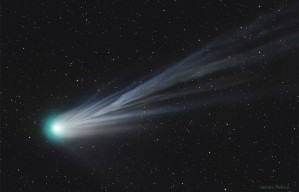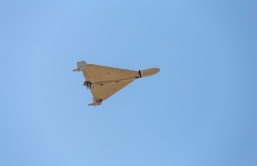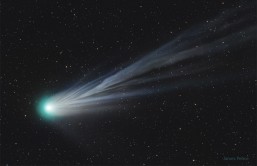New data from NASA's New Horizons mission suggests that the unusual terrain of the Sputnik Planum region of Pluto's surface, which possesses a large nitrogen ice deposit with a polygonal pattern, could be the result of individual Rayleigh-Bénard convection cells.
"Evidence suggests this could be a roiling sea of volatile nitrogen ice," said Jay Melosh of Purdue University and co-author of the study. "Imagine oatmeal boiling on the stove; it doesn't produce one bubble for the entire pot as the heated oatmeal rises to the surface and the cooler oatmeal is pushed down into the depths, this happens in small sections across the pot, creating a quilted pattern on the surface similar to what we see on Pluto."
"Of course, on Pluto this is not a fast process; the overturn within each unit happens at a rate of maybe two centimeters per year," he added.
Although Pluto's surface appears to be made primarily of cold water ice, the surface of the Sputnik Planum region drops into a basin that contains nitrogen ice.
Despite the fact that water and nitrogen are solids at Pluto's temperatures, the low viscosity of nitrogen ice allows it to flow like a fluid, while the high viscosity of water ice allows it to form tall, solid mountains.
"Within this pool of nitrogen ice, there are mountains of water ice that have collected at the edges of the polygons," Melosh said. "The way they have collected suggests they have moved or floated like icebergs with the convection current. If this is true, we can calculate how deep the pool would need to be for the icebergs to float freely without catching on the bottom."
The new convection model by the Purdue team suggests that the surface of the Sputnik Planum's nitrogen ice fields are just 1 million years old, much younger than the rest of the Planum surface, which is estimated to be less than 10 million years old.
"Many people expected Pluto to be a cold, dead world," Melosh said. "What we've discovered through this mission is that cold worlds like Pluto have a different kind of activity that involves materials we think of as gases. This understanding offers a new perspective that cold worlds can be just as active and interesting as our own."
The findings were published in the June 1 issue of the journal Nature.








